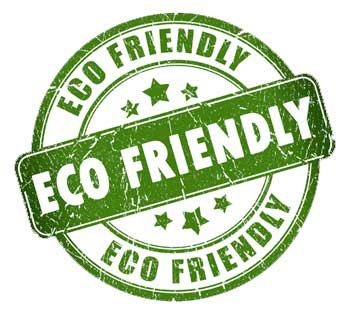What Is Eco-Friendly Pest Control? Ultimate Guide!
Are you in search of a pest control solution that is environmentally friendly? Does the concept of eco-friendly pest control pique your interest? Look no further! Eco-friendly pest control offers a safe and sustainable alternative to conventional methods.
Its primary objective is to repel and eliminate pests using natural, non-toxic substances that do not pose any harm to humans, animals, or the environment.
In this article, we will explore the intricacies of eco-friendly pest control, including its mechanisms, significance, and benefits for a greener and healthier planet. Let us begin!
What is Eco-Friendly Pest Control?
Eco-friendly pest control means using sustainable methods to manage pests without harming the environment or non-target organisms. Unlike traditional methods that rely on chemical pesticides, eco-friendly pest control prioritizes natural and non-toxic alternatives.
The Importance of Eco-Friendly Pest Control
The use of eco-friendly pest control methods is crucial for several reasons:
1. Promoting Environmental Preservation:
By minimizing the use of chemical pesticides, eco-friendly pest control methods help preserve the ecosystem and protect biodiversity. Chemical pesticides can have severe long-term effects on the environment, including contamination of waterways and harm to beneficial insects, birds, and wildlife. Eco-friendly approaches aim to strike a balance between pest management and environmental preservation.
2. Protecting Human Health:
Traditional pest control methods often involve the use of toxic chemicals that can pose health risks to humans. The residues left behind by chemical pesticides can contaminate indoor air, surfaces, and food. Eco-friendly pest control methods prioritize the safety of human occupants by utilizing non-toxic alternatives.
3. Supporting Sustainable Agriculture:
Eco-friendly pest control practices are especially important in agricultural settings. By using natural pest control methods, farmers can minimize the negative impact of pesticides on crop quality, the environment, and farm workers. Sustainable agriculture practices help preserve soil health, reduce chemical inputs, and ensure the long-term viability of food production.
Eco-Friendly Pest Control Methods:
There are various eco-friendly pest control methods available, each tailored to different types of pests and settings. Some of the most popular options include:
- Biological Pest Control:
Biological pest control involves introducing natural predators or parasites to control pest populations. For example, ladybugs can be released to combat aphids, or nematodes can be used to control soil-dwelling pests. This method targets specific pests while minimizing the use of chemicals.
2. Integrated Pest Management (IPM)
Integrated Pest Management is a comprehensive approach that combines different pest control strategies. It involves monitoring pests, setting action thresholds, employing mechanical and biological controls, and using pesticides as a last resort. IPM emphasizes long-term prevention and minimizes the reliance on chemical pesticides.
3. Physical Barriers
Physical barriers are effective for preventing pests from accessing certain areas. For example, installing screens on windows and doors can keep mosquitoes and flies out of homes, or erecting fences can prevent larger pests like deer from entering gardens.
4.Traps and Lures
Traps and lures are commonly used to capture and remove pests. They can be baited with attractants or pheromones to lure specific pests into the trap. Once trapped, pests can be safely removed and released, reducing the need for chemical pesticides.
5. Natural Repellents
Natural repellents are substances that deter pests without harming them. Essential oils, such as peppermint or citrus, can be used as natural repellents to keep insects away. Additionally, certain plants, like marigolds or lavender, have natural pest-repellent properties and can be strategically planted to deter pests.
The Benefits of Eco-Friendly Pest Control:
Choosing eco-friendly pest control methods offers several advantages:
- Reduced Environmental Impact:
Eco-friendly pest control methods minimize the release of harmful chemicals into the environment, helping to preserve ecosystems, protect beneficial insects, and maintain biodiversity.
2. Improved Indoor Air Quality:
By avoiding the use of chemical pesticides indoors, eco-friendly pest control methods help maintain better indoor air quality. This is particularly important for individuals with respiratory conditions or sensitivities.
3. Long-Term Cost Savings:
While some eco-friendly pest control methods may require an initial investment, they often provide long-term cost savings. For example, implementing Integrated Pest Management strategies can reduce the need for repeated pesticide applications.
4. Enhanced Food Safety:
Eco-friendly pest control methods in agriculture contribute to safer food production. By minimizing pesticide use, farmers can reduce the risk of pesticide residues in crops and promote healthier food choices for consumers.
5. Protection of Non-Target Organisms:
Eco-friendly pest control methods prioritize the protection of non-target organisms, such as pollinators and beneficial insects. Maintaining a healthy ecosystem benefits both humans and the environment.
Implementing Eco-Friendly Pest Control:
To effectively implement eco-friendly pest control methods, consider the following steps:
- Identify the Pest
Proper identification is essential for selecting the most suitable eco-friendly pest control method. Different pests require different approaches, so understanding the pest’s biology and behavior is crucial.
2. Research Eco-Friendly Solutions:
Explore eco-friendly pest control options specific to the identified pest. Conduct research, consult experts, or seek advice from local agricultural extension services to find the best methods for your situation.
3. Implement Preventive Measures:
Prevention is key to eco-friendly pest control. Implement preventive measures such as maintaining proper sanitation practices, sealing entry points, and promoting a healthy environment for plants and animals.
4. Use Targeted Treatments:
If pests persist, opt for targeted treatments that focus on specific problem areas. This approach minimizes the impact on non-target organisms while effectively managing the pest population.
5. Maintain Regular Monitoring
Regular monitoring allows early detection of pest issues and helps to promptly address them. Monitoring also provides valuable insights into the effectiveness of eco-friendly pest control methods.
Eco Friendly Pest Control – EcoGuard Pest Management
Faqs for Eco-Friendly Pest Control:
Eco-friendly pest control methods typically involve the use of natural repellents, traps, physical barriers, and biological controls. Natural repellents, such as plant-based oils or extracts, are used to deter pests from entering the area. Traps, like pheromone traps or sticky traps, are employed to catch and eliminate pests. Physical barriers, such as nets or meshes, prevent pests from accessing plants or structures. Biological controls involve introducing natural predators or parasites to control pest populations.
Eco-friendly pest control offers several advantages. Firstly, it helps protect the environment by reducing the reliance on chemical pesticides that can be harmful to ecosystems and wildlife. Secondly, it promotes the health and safety of humans and pets by using non-toxic methods. Additionally, it encourages sustainable pest management practices that focus on long-term prevention rather than solely relying on short-term solutions. Eco-friendly pest control also helps maintain biodiversity and ecological balance by minimizing disruption to the natural food chain.
Eco-friendly pest control can be just as effective as traditional methods, depending on the situation and the specific pest being targeted. While traditional methods may offer quick results, eco-friendly approaches often provide long-term solutions by addressing the root cause of the pest problem. However, it’s important to note that the effectiveness of eco-friendly pest control methods may vary and could require more patience and persistence compared to chemical-based approaches.
Eco-friendly pest control methods can be utilized in most situations, but their effectiveness may depend on factors such as the severity of the infestation and the type of pest involved. In some cases, a combination of eco-friendly and traditional methods may be necessary to achieve the desired results. It is advisable to consult with a professional pest control provider specializing in eco-friendly solutions to determine the most appropriate approach for your specific pest control needs.
While eco-friendly pest control is generally safe and beneficial, it may have a few downsides. It may require more time and effort to achieve results compared to traditional methods. In some situations, certain pests may be more resistant to natural controls, making it challenging to completely eradicate them. Additionally, eco-friendly pest control methods may be more expensive upfront due to the cost of organic products or specialized equipment. However, the long-term benefits and reduced environmental impact often outweigh these potential downsides.
Final Thoughts
Eco-friendly pest control offers a sustainable and safer alternative to traditional pest management methods. By utilizing natural and non-toxic solutions, such as biological controls, physical barriers, and integrated pest management techniques, we can effectively control pests while minimizing harm to the environment and human health. Eco-friendly pest control focuses on prevention and long-term solutions rather than relying on harmful chemicals. It is an important step towards creating a healthier and more sustainable future. Embracing eco-friendly pest control not only protects our surroundings but also promotes a balanced ecosystem where all organisms can thrive harmoniously.




